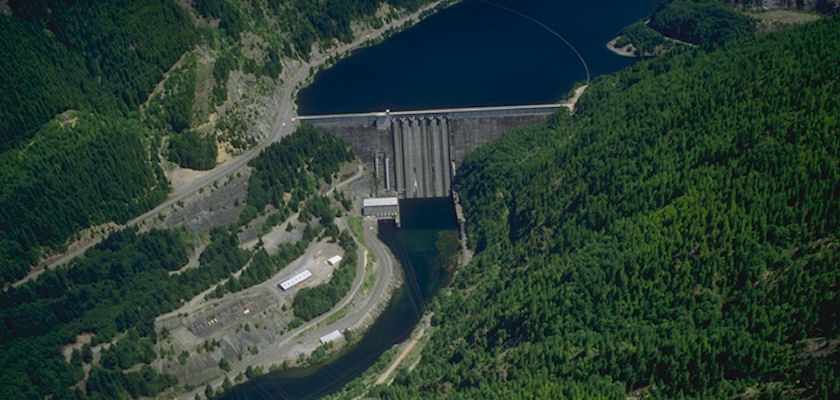US Army Corp of Engineers Meeting Notice!

Notice Received September 16, 2013 from Scott Clemans, Public Affairs Specialist with the U.S. Army Corp of Engineers:
Here are the details of our two North Santiam fish project information sessions:
The first session will be held Monday, Sept. 23 at 6:30 p.m. at the Red Lion Hotel & Convention Center, 3301 Market St. NE, Salem.
The second session will be held Thursday, Sept. 26 at 6:30 p.m. at the Santiam Junior/Senior High School, 265 SW Evergreen St., Mill City.
The content of both sessions will be identical. Corps program and project managers will review the operation of the 13 Willamette Valley dams (including Detroit and Big Cliff) for competing water uses, the 2008 Biological Opinions and their recommendations for endangered fish species, and the status of Corps efforts to implement those recommendations on the North Santiam.
As mentioned below, you’re welcome to attend one of these sessions, but we are also happy to call you or attend one of your organization’s regular meetings to discuss these projects in more detail. Please contact me to arrange the latter.
Best regards,
Scott
_________________________________________________________________________
Notice Received September 9, 2013 from Scott Clemans, Public Affairs Specialist with the U.S. Army Corp of Engineers:
Good Afternoon,
The U.S. Army Corps of Engineers wants to update you on the status of our efforts to help endangered fish species at Detroit Dam. In addition, we are asking for your thoughts about the impacts associated with building and operating water temperature control and juvenile fish passage solutions, and ways to minimize those impacts.
Some background might be in order for those of you not familiar with how we’re addressing NOAA Fisheries’ 2008 Biological Opinion on the operation of our 13 Willamette Valley dams. The BiOp calls for us to implement a downstream water temperature control solution at Detroit Dam by 2018, and a juvenile fish downstream passage solution by 2023. However, the BiOp suggests that we should do both at the same time, if possible.
We’ve come up with a wide range of options for both solutions, from relatively minor operational changes to large, expensive and lengthy construction of new structures.
Our process for these types of projects is to first develop an Engineering Documentation Report, in which we brainstorm and evaluate options and select a preferred alternative. We then move to a Design Documentation Report, in which we develop the details of the selected alternative. The findings of the DDR are used to develop plans and specifications — a complete set of construction plans that will ultimately be used to award and implement a construction contract.
We recently completed the EDR for the Detroit temperature control project. Our EDR identified a structural solution as the most feasible alternative for meeting downstream water temperature targets, while accommodating the later addition of a juvenile fish passage solution. We are now in the 12-18 month DDR phase of the temperature control project, in which we will develop some of the technical details of this structural solution. Design details and construction methods have not been determined at this point. We are currently weighing the costs and benefits of the various details and construction methods to determine the best path forward.
Assuming adequate funding to continue this process, after the DDR is complete we will take 12-18 months to develop the plans and specifications necessary to award a contract. Finally, we will solicit bids, award a contract and begin construction. Construction for a project of this magnitude could take 18-36 months.
We have heard that some North Santiam Basin residents have mistaken the completion of the EDR to mean that construction is imminent. This is not true. It is true, however, that we are looking at a possible future construction project.
We understand the importance of Detroit Dam and Reservoir to you and the other businesses, residents and visitors of the North Santiam Basin. Whatever solution we ultimately implement will involve impacts to reservoir levels, river flows, dam access and other factors. We are interested in working with you to quantify those impacts, and try to minimize them.
We’ll holding meetings in Salem and Mill City on the evenings of Monday, Sept. 23 and Thursday, Sept. 26 to inform and solicit feedback from the general public, and you’re welcome to attend one of those. Details will appear soon in your local news media, and we’ll also send a follow-on email message.
However, we particularly appreciate the feedback of your organization. We want to know:
What types of impacts are tolerable to you and your constituents?
At what level or intensity?
Over what duration?
At what times of year?
What we can do to help minimize those impacts?
You are welcome to email your thoughts to willamette@usace.army.mil, using the subject line “Detroit fish project feedback”.
We are sure you have many questions about these projects, and we want to provide you all the information we can. Please feel free to call or email me directly. I will do my best to address your questions, or find the right people to do so, either by telephone or in person at one of your upcoming meetings.
Sincerely,
Scott Clemans
Public Affairs Specialist
Portland District, U.S. Army Corps of Engineers
Office: (503) 808-4513
Cell: (503) 568-9041
http://www.nwp.usace.army.mil/
Facebook/Flickr/Pinterest/Twitter/YouTube: PortlandCorps
